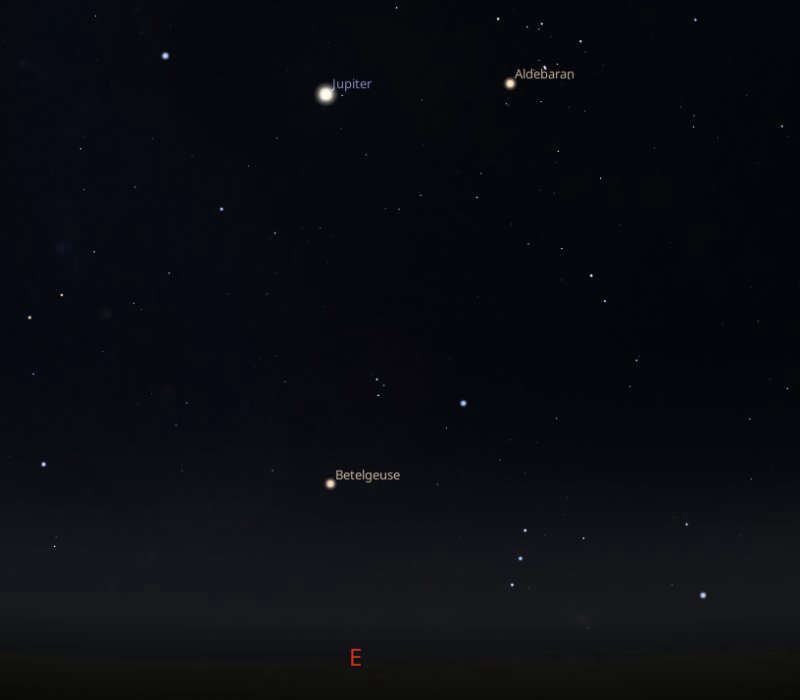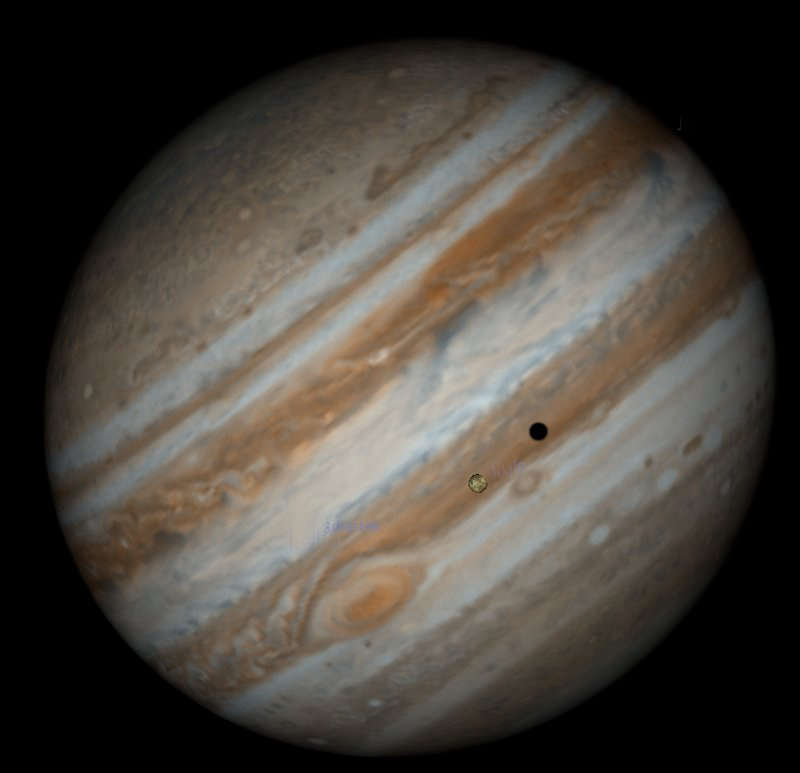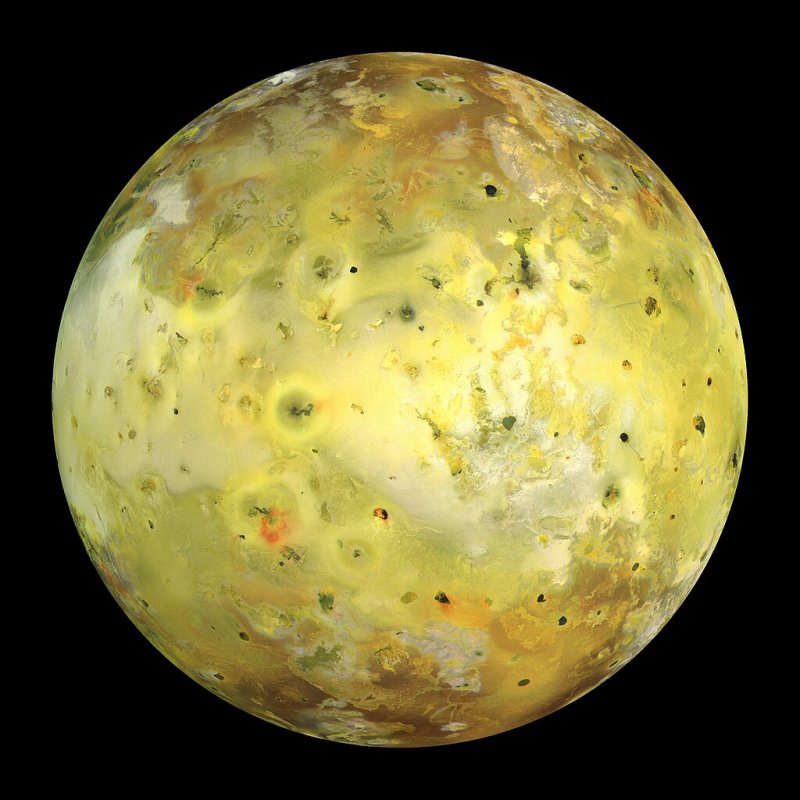
Monday 25th November to Sunday 1st December 2024
If you look towards the east at 8pm on the evening of Tuesday 26th, the constellation of Orion will have just risen above the horizon, with Jupiter a little higher.

Aim your telescope towards the planet and it should be easy to spot Jupiter's four Galilean moons.

Around 8pm, Io will be passing (or transiting) in front of the planet and because of the angle that sunlight is illuminating the event, Io's shadow will be cast on the planet's surface. See if you can make out what will look like a small black dot against the clouds of Jupiter's storms.

Io is the third largest of Jupiter's Galilean moons and a little larger than our own Moon. It would be a pretty nasty place to live, with over 400 live volcanoes, making it the most geologically active object in our Solar System. Being the closest moon to Jupiter, it is also constantly bombarded by magnetic radiation from the planet. Io was the first moon identified by Galileo back in 1610 with his new-fangled invention called a telescope!

There are a couple of potentially excellent International Space Station passes next week if the skies are clear: Tuesday 26th at 6.17pm and Wednesday 27th at 5.28pm. In both cases, the ISS appears in the west and spends several minutes passing almost directly overhead, before disappearing towards the east.
Finally, a reminder that my next astronomy talk and star party at the Ham Hill Visitor Centre is taking place at 7pm on Friday 6th December. The last one filled very quickly, so if you'd like to come along, it is essential to reserve a place by contacting the Ranger's Office on 07973 887129.
www.starsoversomerset.com
Screenshots courtesy of Stellarium
Io image courtesy of Wikipedia
Copyright Adrian Dening and Radio Ninesprings 2024

 False Fire Alarms
False Fire Alarms
 Dog DNA
Dog DNA
 Mobile Phones in Vehicles
Mobile Phones in Vehicles
 Car Free Route
Car Free Route
 Clean up our Countryside
Clean up our Countryside
 Church Bats
Church Bats








